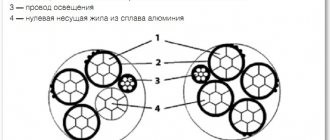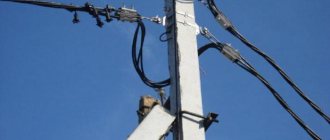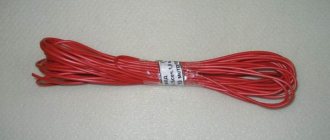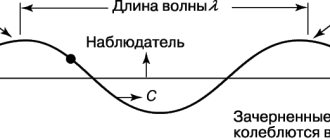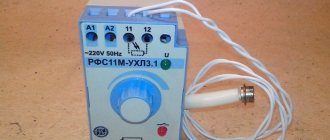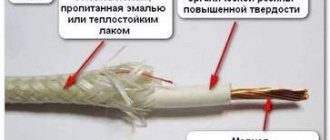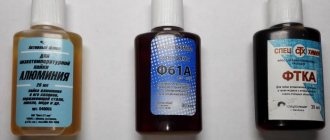Conductive varnish composition
The electrically conductive varnish base includes special fine-grained elements; after the drying stage is completed, they become a film-like coating through which electricity passes well.
So, after their use, the level of electrical conductivity returns within an hour; full restoration of the level occurs in about 10 hours. Sometimes, in order to achieve a better effect, re-processing is carried out.
Varnishes are applied to small areas; for this reason, the compositions are produced in small containers.
After their use, the level of electrical conductivity returns within an hour; full restoration of the level occurs in approximately 10 hours.
Features and properties of conductive adhesives
To obtain the desired layer, high-quality conductive varnishes are made using graphite, nickel powder, polymers, and powdered silver.
An elastic composition with low resistivity is needed. Thanks to its elastic property, it will be possible to easily apply a layer pointwise, without fear that the product will get onto unnecessary areas. To do this, it is necessary to correctly distribute the amount of conductive substances with polymer binders.
Excessive addition of electrically conductive substances will result in poor adhesion to the substrate. The reliability of contacts will be questionable.
Graphite varnish must also be quick-drying, environmentally friendly and withstand high temperatures.
Thanks to its elastic property, it will be possible to easily apply a layer pointwise, without fear that the product will get onto unnecessary areas.
Conductive spray
Along with varnishes, materials with similar properties are also found in cans. This is a spray made from graphite powder. It is used to create a conductive surface on materials such as plastic, glass, metal or wood. Sprays can also be used as a lubricant when it is necessary to create a smooth, high-temperature-resistant, dry-sliding surface.
Requirements
Of course, the main parameter for such products is the quality of current conduction; to obtain the effect, small metallic substances are used in the composition. The most popular is the use of nickel powder; particles of gold or other precious metals can also be selected.
The next necessary criterion is having a low resistivity. The presence of a large number of electrically conductive elements leads to a decrease in adhesive properties.
To reduce the loss of adhesion during use of the item, varnishes are endowed with low thermal resistance. The products require high-quality gluing and the creation of a protective layer, so a high level of elasticity and strength is required, achieved through polymer binders.
The layer should not be very liquid, otherwise parts of the device will be damaged if drops fall on an unnecessary area during repairs.
To reduce the loss of adhesion during use of the item, varnishes are endowed with low thermal resistance.
Criteria for a high-quality conductive varnish
The main characteristic of conductive adhesives, sprays and varnishes is their ability to increase the transmission of electricity. Electrical conductivity is achieved due to the presence of powdered metal particles in the adhesive base.
The most popular is nickel powder, as the most effective conductor of electric current.
- Additionally, noble metal powders are added to the composition of such adhesive and current-conducting products at the same time. It can be palladium, gold or silver.
- It is important to take this nuance into account, especially if you are making a similar material at home - the presence of an excessive amount of metal dust weakens the adhesive characteristics.
- At the same time, if the presence of metal in conductive varnish, spray or glue is insufficient, then its electrical conductivity will deteriorate.
The composition must fulfill its main task - gluing and protecting surfaces.
Liquid consistency for these materials is also considered undesirable, since fast drying time is important.
Advantages and disadvantages
These products are used for a variety of electronics parts. They are distinguished by a number of positive properties that distinguish them among varnish products:
- High level of adhesion, adheres well to porous, smooth substrates;
- Usually a convenient applicator is installed on the container, which allows you to apply a layer evenly and in the desired size;
- Suitable for gluing parts that during operation will heat up no more than 1800 degrees;
- Withstands long-term heating without changing characteristics;
- Long lasting result;
- Sealing property;
- Quick drying;
- Withstand temperature changes.
The downside is the relatively high cost, but it is possible to make the varnish yourself.
Suitable for gluing parts that during operation will heat up no more than 1800 degrees.
Lucky
Varnishes and their types
Today it is impossible to imagine a single renovation or construction work where varnishes are not used.
Acrylic varnish is widely used for protective and decorative finishing of building surfaces - brick walls, artificial and natural stone, wood and concrete. Varnish is used in many areas of construction. Acrylic varnish has elastic properties and unique performance properties, which allows you to create a durable and moisture-resistant coating that can easily withstand external negative influences. Acrylic varnish significantly improves the appearance of the surface being coated and guarantees high reliability of protection against fungus and mold. This is a universal material with a wide range of applications, which is popular when carrying out any finishing work. Not only acrylic, but also other modern varnishes have high water resistance and excellent qualities for decoration. For interior decoration, polyurethane wood varnish is used, which significantly extends the service life of wooden coverings. Elastic parquet water-based varnish does not contain toxic elements or solvents, so it is successfully used in residential areas. But for high-quality priming and surface preparation, acrylic primer is best suited, as it penetrates deep into the structure of the surface being treated. But still, acrylic varnish is used most often as it is the easiest to use and has good characteristics. All materials are manufactured using modern technologies, which guarantee high quality paint products and excellent results.
But in addition to specialized varnishes, which are designed to perform only a certain set of operations, when carrying out repair and construction work there is often a need for universal varnishes. Tsapon varnish is just such a universal varnish, suitable for various types of work. Tsapon varnishes were first developed by Soviet scientists, and they were distinguished by their low cost and practicality. They also had excellent optical properties - the film they created did not become cloudy over time. Companies producing Zapon varnishes today have almost completely preserved all the original advantages of the material, only making appropriate changes to the production formula, which were dictated by time and the latest developments in all areas of science and technology.
Zapon varnish performs two main functions - protecting materials from the negative effects of the environment and giving the material a more aesthetic, decorative appearance. But, unlike narrow-profile varnishes, universal zapon varnish has excellent adhesion not only to any one material, but also to a whole range of all major building materials.
In domestic construction or repair conditions, Tsapon varnish will help create a highly effective protective and decorative coating for both ferrous and non-ferrous metals, stone, brick, wood, ceramics, glass and other materials that are operated at temperatures from -30oC to +150oC. If products made of non-ferrous metal have been coated with tsapon varnish, they will not fade for a long time and will retain their freshness and purity of color for a long time.
Also, the versatility of Tsapon varnish also lies in the fact that it can be used for both internal and external work - the varnish film of this varnish can easily withstand exposure to water, and some types of Tsapon varnish (for example, Tsapon non-resistant) are also resistant to exposure to gasoline and oils.
Varnishes are an excellent means of protecting furniture and other surfaces from external factors, as well as an excellent means for decoration and decoration.
Application area
The use of varnish is most often associated with the inability to use a soldering iron. There are parts that are simply too small or may be damaged by the device. Its use in electroplating is known; it is convenient to apply varnish when working with electroplating. Other areas of varnish use:
- Gluing heating filaments to the glass of a car;
- Gluing piezoceramic plates;
- For fastening 2 dielectrics when working with communications;
- For connecting wires with a small cross-section;
- Glues damaged tracks of remote controls, keyboards and others;
- Helps to glue crystals and microcircuits to the board in various computer equipment;
- Helps restore conductivity in old damaged parts;
- For work with the installation of “warm floors”.
The use of varnish is most often associated with the inability to use a soldering iron.
Review of popular brands of varnishes
Graphite varnishes are on sale in large quantities; there are Russian brands that produce high-quality varnishes, and foreign products. Among the Russian products, Kontaktol stands out, which, according to the manufacturer, includes silver powder. It is popularly used to repair the heated glass system in cars.
It is popularly used to repair the heated glass system in cars.
Also with an epoxy base, characterized by a high level of adhesion to different substrates.
Characterized by a high level of adhesion to different substrates.
The popular foreign product “Done Deal” creates a good result, but the cost is higher than other products.
It creates a good result, but the cost is higher than other means.
If you need to restore electrical conductivity on the buttons of a remote control or other devices, then professionals recommend Elast conductive varnish.
Professionals recommend conductive varnish Elast.
General information
Composition of conductive paints and varnishes
Already 1 hour after application of such materials, the restoration of electrical conductivity begins. After 10 hours the result will be even better to the maximum possible. Some of the masters will repeat the processing to enhance the effect. Since it is difficult to process such materials (they are intended for a small processing area), a very small amount of such products is required to restore any electronic equipment. It is for this reason that the electrically conductive composition is offered in small quantities. Such materials are packaged in small bottles or tubes.
Conductive Sprays
Along with varnish products, there are also materials with similar properties in aerosol cans. We are talking about a spray that is made from graphite powder. It is used to create a current-carrying surface on surfaces of materials such as plastic, metal, glass or even wood. Sprays can also be used as a lubricant when it is necessary to create a smooth and stable surface that can withstand high temperatures and is also slippery and dry.
Requirements
The main quality of such adhesives and varnishes is high electrical conductivity. It is calculated due to the presence of special, extremely small metal particles in the composition. Manufacturers most often use nickel-type powder for this, which conducts electricity extremely well. This product also contains fractions of precious metals, for example, palladium, silver and gold. In addition to electrical conductivity, it is important that the varnish composition had a minimum specific resistance. At a high concentration of current-conducting components, the adhesive properties of such materials weaken. So that the degree of adhesion is not lost during the use of electrical equipment, and varnishes for repair work have extremely low thermal resistance. The compositions must also fulfill their main function and perfectly glue and protect surfaces. The product must be strong and also elastic - polymer binders give these characteristics.
Please note that these materials are not allowed to have a very liquid consistency. The viscous mass allows the prevention of possible defects in the microcircuit during the repair process or replacement. The speed of drying will also be extremely important - this will make working with varnishes and adhesives more comfortable.
Review of varnishes and adhesives from popular brands
On the construction market you can find products from foreign and domestic manufacturers. Thus, among domestic materials we can highlight “Kontaktol”. It is not difficult to make a conductive varnish with your own hands for electroplating. But in the specified composition, as stated by the manufacturer, it contains silver powder.
The product is perfect for repairing the rear window heating system on a car. Even the domestic product Elekont has similar characteristics. It is made on the basis of epoxy resin and has an excellent degree of adhesion to all types of surfaces.
This product is aimed specifically at motorists, but, as experts say, its effectiveness is quite weak. The varnish composition of American origin “Done Deal” has higher characteristics, but the price of such a product is quite high. The material is made of a conductive composition and an adhesive.
To restore the conductive layer on buttons to remove cracks on cables of various electronic devices, experts strongly recommend the varnish composition Elast. The only drawback is the short service life compared to adhesive compositions.
How to make your own varnish
It is not so difficult to make graphite varnish with your own hands, and the result will be no less quality when compared with using finished products from the store. You will need graphite, silver, an adhesive and a couple of other fillers, depending on the chosen recipe for preparing the composition:
- 15 grams of fine graphite powder, 30 grams of silver powder, 30 grams of vinyl chloride-vinyl acetate, 32 grams of acetone are mixed together. A syrupy consistency is required;
- 4 grams of nitrocellulose, 2.5 grams of rosin, 30 grams of ethyl acetate, 3 grams of shellac, 31 grams of ethyl denatured alcohol. Mixing begins with powders, then other ingredients are added to the total mass;
- Taking into account the task at hand, different levels of current conductivity can be obtained. Graphite may be obtained from batteries; the resulting graphite will need to be mixed with tsaponlak. This option is not suitable for rubber parts due to poor adhesion to rubber;
- You can get a varnish-like substance by mixing super glue with 2m or 4m pencils. The pencil lead must be sharpened to the same extent as the glue. Graphite is mixed with glue, the resulting mass will be electrically conductive.
Before applying the homemade mixture, be sure to mix it well again. The viscosity level of homemade products can be adjusted to the desired level by adding solvents.
It is not so difficult to make graphite varnish with your own hands, and the result will be no less quality when compared with using finished products from the store.
Conductive varnishes can be used on various electronic products; they are used to glue together parts of screens, buttons, etc. If you don’t have such a product at hand, you can prepare the mixture yourself; the quality of the coating will be high. Although using ready-made varnishes is always more convenient.
Conductive mixture at home
Folk craftsmen have figured out how to make conductive varnish with your own hands, at home. There are several options for how to create this mixture. The basis of the composition is graphite powder and silver in the form of fine powder; binding ingredients and a solvent are added to these components. Here is a list of simple recipes that make it easy and quick to prepare graphite varnish from available ingredients:
- The following substances are mixed together: graphite powder - 15 g, silver powder - 30 g, vinyl chloride-vinyl acetate - 30 g, acetone - 32 g. These ingredients are mixed in a small container. The result should be a homogeneous gray-black liquid that looks like syrup. After mixing, the conductive mixture is poured into a small glass vessel and sealed with a lid. Before using this varnish, it must be thoroughly mixed. If you pour less solvent, the viscosity of the solution will be greater. This composition dries in approximately 20-60 minutes after application, this time depends on the temperature and humidity of the air.
- It is necessary to mix powdered graphite - 6 g, and silver in powder form - 60 g. These ingredients are mixed with binders, there are 2 options:
- 3 grams of shellac and 31 grams of ethyl alcohol denatured alcohol;
2.5 grams of rosin, 4 grams of nitrocellulose and 30 grams of acetone.
- If electrically conductive connections do not experience large mechanical loads, then improvised means can be used. For example, graphite can be extracted from a AA battery; it must be mixed with tsaponlak. This composition has little adhesion to rubber, so this mixture is not applied to the buttons of remote controls. But the solution can be successfully used to repair graphite tracks on control panels.
- Conductive compositions are made very quickly from materials available in every home. Although this will not be exactly a varnish solution, it will conduct current. Any superglue and crushed graphite from a simple pencil are mixed in equal proportions. To grind graphite, you can sharpen a pencil lead with a file. After this, a new tube of glue is unrolled from the side where its body is soldered. Graphite powder is carefully poured into this hole, after which the mixture is thoroughly mixed with a match or toothpick to obtain a homogeneous mass. Then the tube is packed back. After this, you can use this product as usual, through the hole in the plastic nozzle.
The first step is to mix silver and graphite powder, then add one of these binder options. Then all components are mixed until smooth and transferred to a glass container. Before using this varnish, you need to stir it well; if it becomes too thick, you can dilute it with a solvent.
If a person does not have knowledge in the field of electronics and has never repaired any household appliances, then it is better not to take risks and not use a conductive varnish solution at home. It is advisable to take the device to a workshop so that a qualified specialist can diagnose it and, if necessary, correct the electrical conductivity of the contacts.

